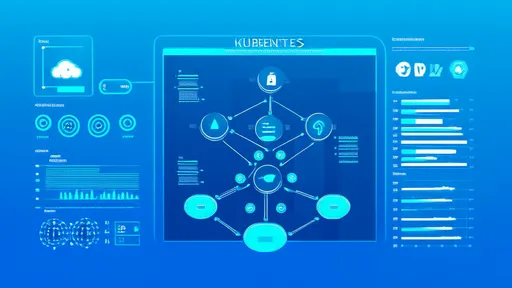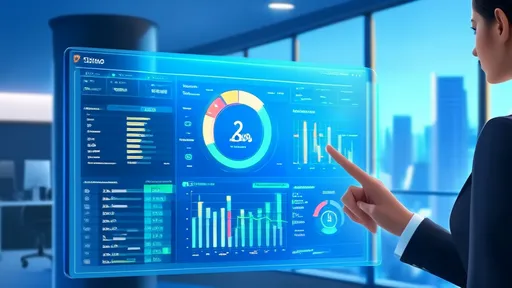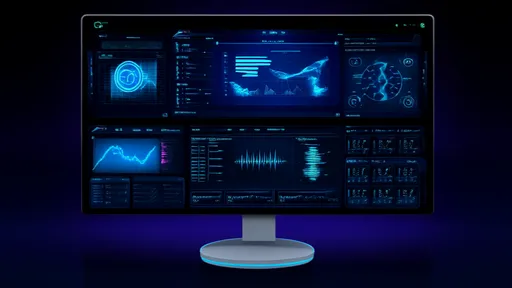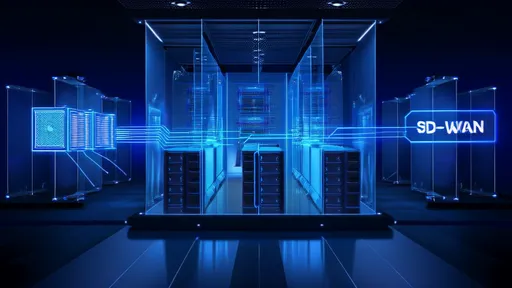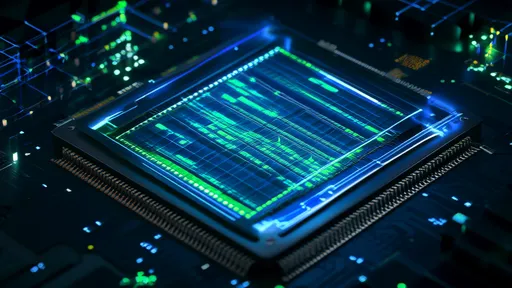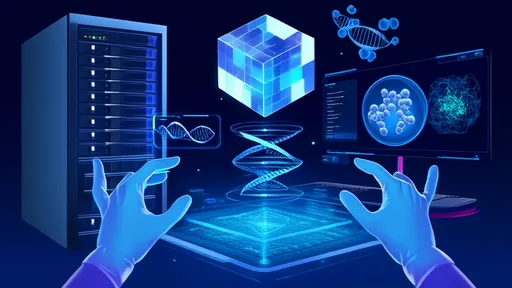In today's rapidly evolving cybersecurity landscape, organizations face increasingly sophisticated threats that traditional perimeter-based defenses struggle to contain. The concept of microsegmentation has emerged as a critical component of zero trust architecture, fundamentally transforming how enterprises protect their digital assets. Unlike conventional security approaches that focus on building strong outer walls, microsegmentation operates on the principle that no entity—whether inside or outside the network—should be automatically trusted.
Microsegmentation technology enables organizations to create granular security zones within their infrastructure, allowing them to isolate workloads and applications from one another. This approach significantly reduces the attack surface by implementing precise access controls between different segments, even when they reside within the same network environment. By enforcing least-privilege access principles at the most detailed level, security teams can prevent lateral movement of threats, effectively containing potential breaches before they can spread throughout the system.
The implementation of microsegmentation requires a comprehensive understanding of an organization's application dependencies and traffic patterns. Security architects must map out all communication flows between workloads, applications, and services to establish appropriate segmentation policies. This process often involves deploying software-defined perimeters that can dynamically adapt to changing network conditions and application requirements. Modern microsegmentation solutions leverage advanced analytics and machine learning to continuously monitor traffic patterns and automatically suggest optimal segmentation policies.
One of the most significant advantages of microsegmentation is its ability to provide visibility into east-west traffic within data centers and cloud environments. Traditional security tools often focus north-south traffic, leaving internal communications vulnerable to exploitation. With microsegmentation, security teams gain deep insight into all internal communications, enabling them to detect anomalous behavior and potential threats that would otherwise go unnoticed. This enhanced visibility forms the foundation for more effective threat detection and response capabilities.
Implementing microsegmentation within a zero trust framework requires careful planning and execution. Organizations must begin by identifying their most critical assets and determining the appropriate level of protection for each segment. This involves classifying data and applications based on their sensitivity and business importance, then establishing security policies that reflect these classifications. The process typically involves deploying specialized microsegmentation tools that can enforce policies across heterogeneous environments, including physical data centers, virtualized infrastructure, and multi-cloud deployments.
The evolution of cloud computing and containerized applications has made microsegmentation increasingly relevant and necessary. In cloud environments where traditional network boundaries are blurred, microsegmentation provides the fine-grained control needed to maintain security without impeding business agility. Container orchestration platforms like Kubernetes have native capabilities that support microsegmentation, allowing security policies to travel with workloads regardless of their deployment location. This approach ensures consistent security enforcement across hybrid and multi-cloud environments.
Successful microsegmentation implementation requires close collaboration between security teams, network administrators, and application developers. Security policies must align with business requirements while maintaining necessary protection levels. Organizations often face challenges in balancing security needs with operational efficiency, particularly when dealing with legacy applications that weren't designed with segmentation in mind. Addressing these challenges requires a phased approach, starting with non-critical workloads and gradually expanding to more sensitive environments.
The future of microsegmentation continues to evolve with advancements in artificial intelligence and automation. Next-generation solutions are incorporating predictive analytics to anticipate potential security gaps and recommend proactive measures. As organizations embrace digital transformation initiatives, microsegmentation will play an increasingly vital role in enabling secure innovation. The technology's ability to provide adaptive, context-aware security makes it an essential component of modern cybersecurity strategies that must accommodate dynamic business environments and emerging threat landscapes.
While implementing microsegmentation presents certain challenges, the security benefits far outweigh the initial investment in time and resources. Organizations that successfully deploy microsegmentation as part of their zero trust strategy typically experience reduced incident response times, decreased blast radius during security events, and improved compliance with regulatory requirements. As cyber threats continue to grow in sophistication, microsegmentation stands as a critical defense mechanism that enables businesses to operate securely in an increasingly interconnected digital world.
In today's rapidly evolving cybersecurity landscape, organizations face increasingly sophisticated threats that traditional perimeter-based defenses struggle to contain. The concept of microsegmentation has emerged as a critical component of zero trust architecture, fundamentally transforming how enterprises protect their digital assets. Unlike conventional security approaches that focus on building strong outer walls, microsegmentation operates on the principle that no entity—whether inside or outside the network—should be automatically trusted.
In the ever-evolving landscape of container orchestration, Kubernetes has firmly established itself as the de facto standard for managing containerized applications at scale. One of its most powerful features is the ability to automatically scale applications in response to fluctuating demand, ensuring optimal performance while controlling costs. However, implementing an effective autoscaling strategy requires more than just enabling the feature; it demands a thoughtful approach grounded in proven best practices.
In today's digital landscape, cloud computing has become the backbone of modern business operations, offering unparalleled scalability and flexibility. However, this convenience comes at a cost—literally. As organizations increasingly migrate to the cloud, managing and controlling cloud expenditures has emerged as a critical challenge. Many companies find themselves grappling with unexpected bills, wasted resources, and a lack of visibility into where their cloud dollars are going. This is where FinOps, a cultural practice and operational framework, steps in to bring financial accountability to the world of cloud spending.
The cybersecurity landscape continues to evolve at a breakneck pace, with containerization sitting squarely at the heart of modern application development. As organizations increasingly deploy applications using technologies like Docker and Kubernetes, the security of the underlying container images has become a paramount concern. This has spurred the development and maturation of a robust market for container image vulnerability scanning tools, each promising to fortify the software supply chain. A comprehensive evaluation of these tools reveals a complex ecosystem where capabilities, integration depth, and operational efficiency vary significantly.
As enterprises continue their digital transformation journeys, the debate between SD-WAN and SASE for hybrid cloud connectivity has become increasingly prominent. These two technologies represent different generations of networking solutions, each with distinct approaches to addressing the complex challenges of modern distributed architectures. While SD-WAN emerged as a revolutionary improvement over traditional MPLS networks, SASE represents a more comprehensive framework that integrates networking and security into a unified cloud-native service.
The evolution of cloud-native databases has entered a new phase with the rise of serverless architectures. What began as a shift from on-premise data centers to cloud-hosted instances has now matured into a more dynamic, cost-efficient, and scalable paradigm. The serverless model represents a fundamental rethinking of how databases are provisioned, managed, and utilized, moving away from static resource allocation toward an on-demand, pay-per-use approach. This transformation is not merely a technical upgrade but a strategic enabler for businesses aiming to thrive in an unpredictable, data-intensive landscape.
In the rapidly evolving landscape of cloud-native computing, the demand for robust observability has never been more critical. As organizations migrate to dynamic, distributed architectures, traditional monitoring tools often fall short in providing the depth and real-time insights required to maintain system reliability and performance. Enter eBPF—extended Berkeley Packet Filter—a revolutionary technology that is redefining how we achieve observability in cloud-native environments. Originally designed for network packet filtering, eBPF has evolved into a powerful kernel-level tool that enables developers and operators to gain unprecedented visibility into their systems without modifying application code or restarting processes.
The landscape of enterprise IT has undergone a seismic shift with the widespread adoption of multi-cloud and hybrid cloud strategies. While this approach offers unparalleled flexibility, cost optimization, and avoids vendor lock-in, it introduces a formidable layer of complexity. At the heart of this complexity lies the significant challenge of managing compatibility across disparate cloud environments. Cross-cloud management platforms have emerged as the central nervous system for this new reality, but their effectiveness is directly tied to their ability to navigate a labyrinth of compatibility issues.
The economic implications of serverless computing have become a central topic in cloud architecture discussions, shifting the conversation from pure technical implementation to strategic financial optimization. As organizations increasingly adopt Function-as-a-Service (FaaS) platforms, understanding the nuanced cost structures and optimization opportunities has become critical for maintaining competitive advantage while controlling cloud expenditures.
The landscape of software development has undergone a seismic shift with the proliferation of cloud-native architectures. As organizations race to deliver applications faster and more reliably through CI/CD pipelines, a critical challenge has emerged: security. The traditional approach of bolting on security measures at the end of the development cycle is no longer tenable. It creates bottlenecks, delays releases, and often results in vulnerabilities being discovered too late, when remediation is most costly and disruptive. In response, a transformative strategy known as "shifting left" has gained significant traction, fundamentally rethinking how and when security is integrated into the software development lifecycle.
The landscape of software testing is undergoing a profound transformation, driven by the relentless integration of artificial intelligence. One of the most impactful and rapidly evolving applications of AI in this domain is the automation of test case generation. This is not merely an incremental improvement to existing processes; it represents a fundamental shift in how development teams approach quality assurance, promising to accelerate release cycles while simultaneously enhancing the robustness and coverage of testing regimens.
In the ever-evolving landscape of artificial intelligence, voice generation technology has emerged as one of the most captivating and, at times, unsettling advancements. The ability to clone and generate highly realistic human voices is no longer confined to the realms of science fiction; it is a present-day reality with profound implications. This technology, often referred to as voice cloning or neural voice synthesis, leverages deep learning models to analyze, replicate, and generate speech that is indistinguishable from that of a real person. The process begins with the collection of a sample of the target voice, which can be as short as a few seconds or as long as several hours, depending on the desired fidelity and the complexity of the model being used.
The semiconductor industry stands at an inflection point where traditional chip design methodologies are increasingly strained by the complexity of modern architectures. As Moore's Law continues its relentless march, the once-manual processes of floorplanning and routing have become prohibitively time-consuming and error-prone. In this challenging landscape, reinforcement learning has emerged not merely as an experimental approach but as a transformative force in automating and optimizing chip layout.
In laboratories and research institutions across the globe, a quiet revolution is underway as artificial intelligence becomes an indispensable partner in scientific discovery. What was once the domain of human intuition, years of trial and error, and painstaking data analysis is now being accelerated at an unprecedented pace by machine learning algorithms and computational power. This transformation is not about replacing scientists but empowering them to ask bigger questions and uncover deeper truths about our universe.
In the ever-evolving landscape of artificial intelligence, a quiet revolution is taking place that promises to fundamentally reshape how machines understand the world. For decades, the field has been dominated by correlation-based approaches—powerful pattern recognition systems that excel at finding statistical relationships in data but fall painfully short when it comes to true understanding. The emerging discipline of causal machine learning seeks to change this paradigm, moving beyond mere correlations to uncover the actual mechanisms that drive phenomena in the real world.

